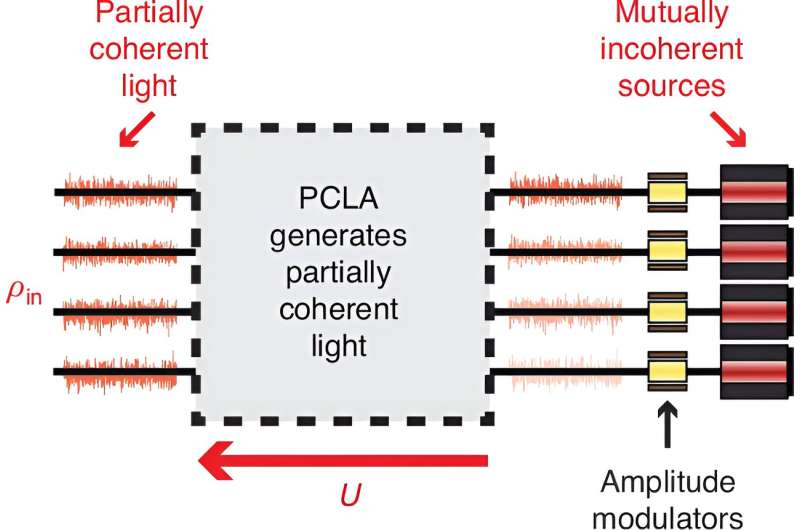
Anyone familiar with optics labs
is familiar with the extremes of light coherence: laser beams are highly
coherent, producing clear interference patterns used for precise applications
like atomic manipulation or precise sensing. In contrast, light from sources
like flashlights is incoherent, typically unable to produce such patterns
without considerable effort, or at the cost of considerable optical power
losses.
However, most practical scenarios involve light that exhibits partial coherence, displaying characteristics somewhere between these two extremes. This partial coherence can manifest across different degrees of freedom of light, including spatial and temporal (frequency) components, making its study and manipulation complex yet essential.
Addressing this challenge, a team at Stanford University has developed a device capable of automatically analyzing the partial coherence of multimode spatial light fields. This device uses a network of cascaded layers of interferometers to measure and control the light's coherency matrix, effectively separating the light into components that are mutually incoherent (such as two distant emitting points on the surface of a flashlight). The findings are published in the journal Light: Science & Applications.
The technology is based on integrated photonics platforms, utilizing arrays of reconfigurable Mach-Zehnder interferometers (MZI). These arrays allow for precise manipulation and real-time adjustment to the optical properties of the input light, adapting dynamically to changes in its coherence.
This new method has the potential to significantly enhance various applications, including advanced imaging systems, environmental sensing, and the development of more effective optical communications systems. By providing a deeper understanding and control of light coherence, these advancements could lead to improvements in both scientific research and practical technology deployment.

 Previous page
Previous page Back to top
Back to top







